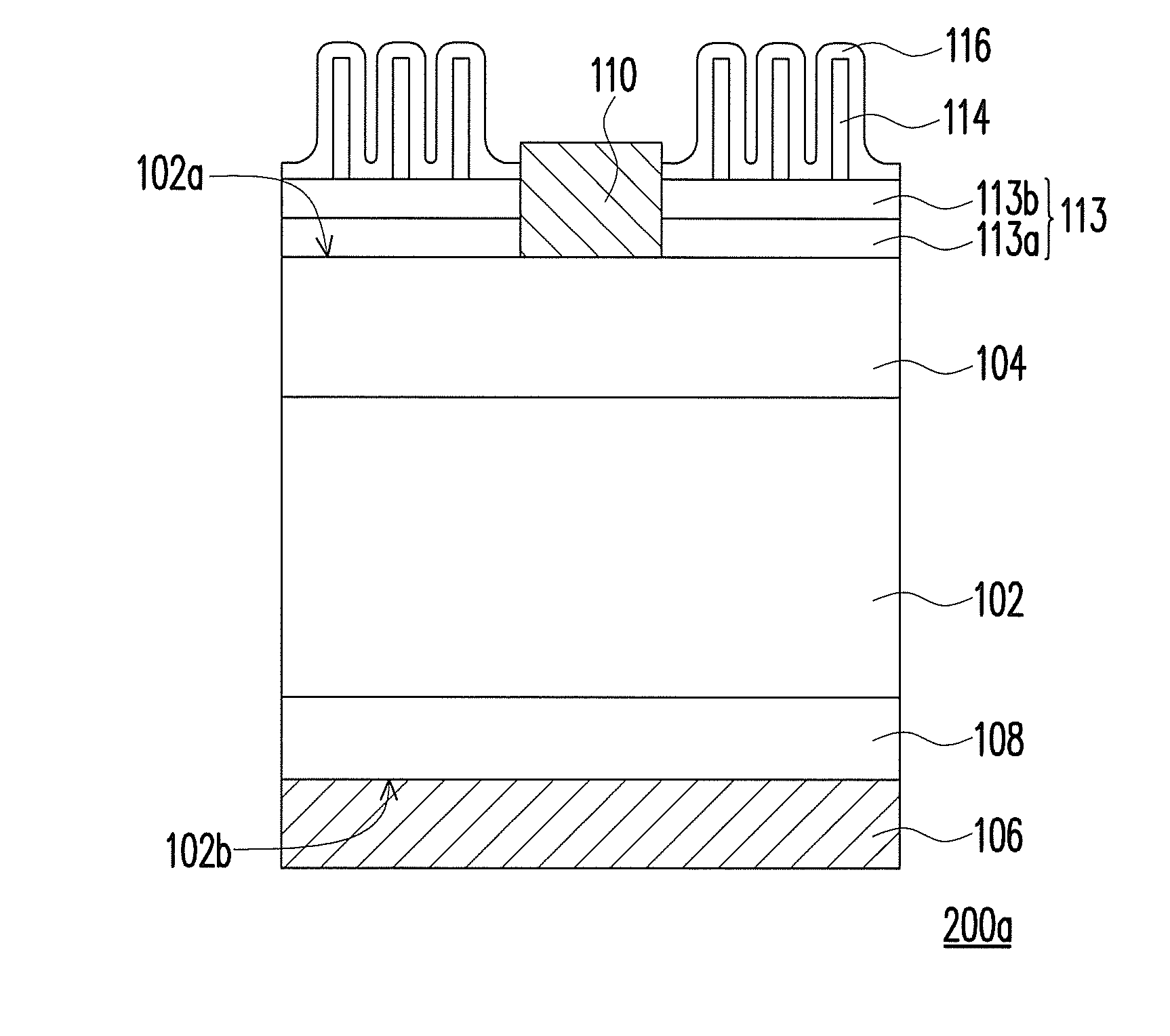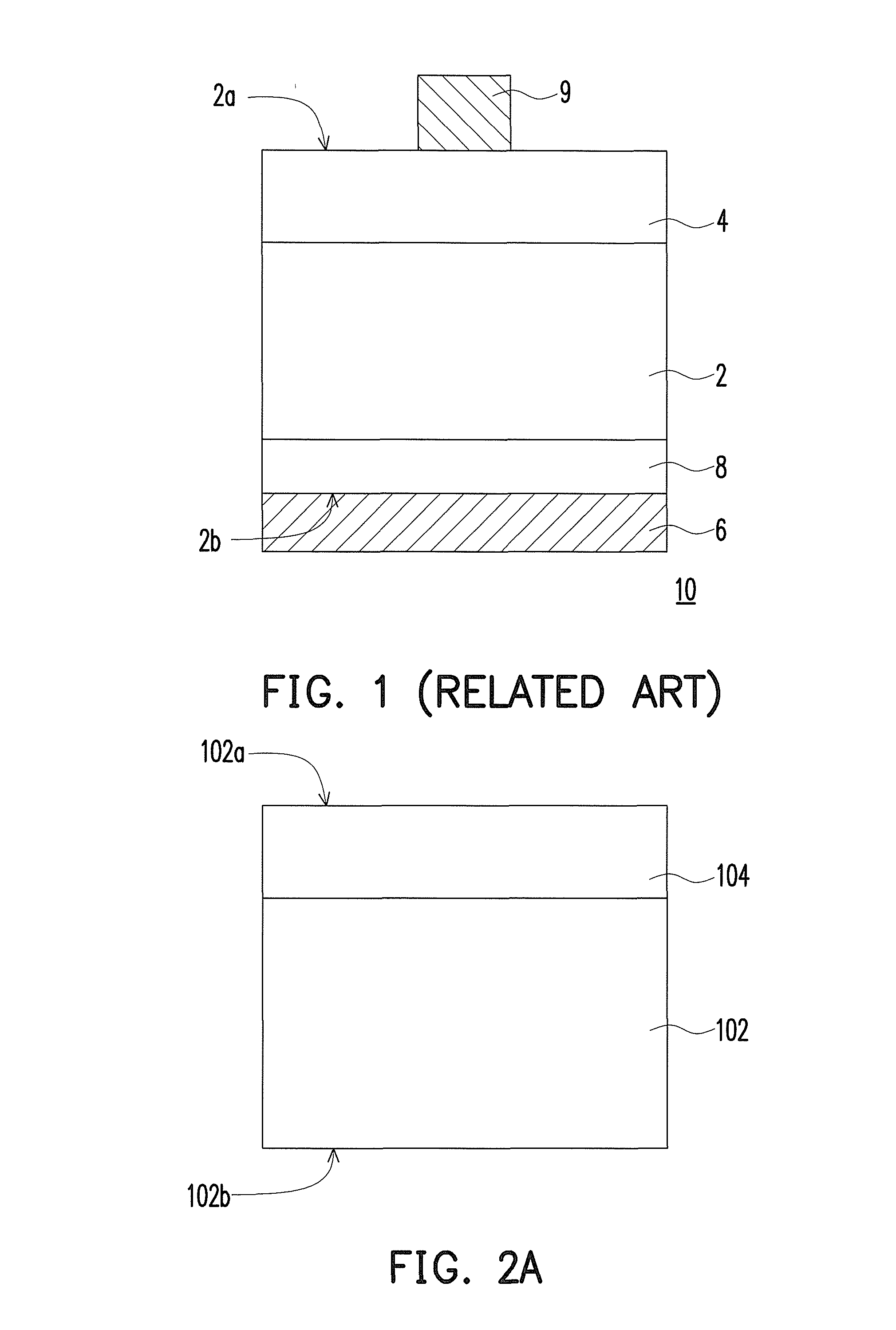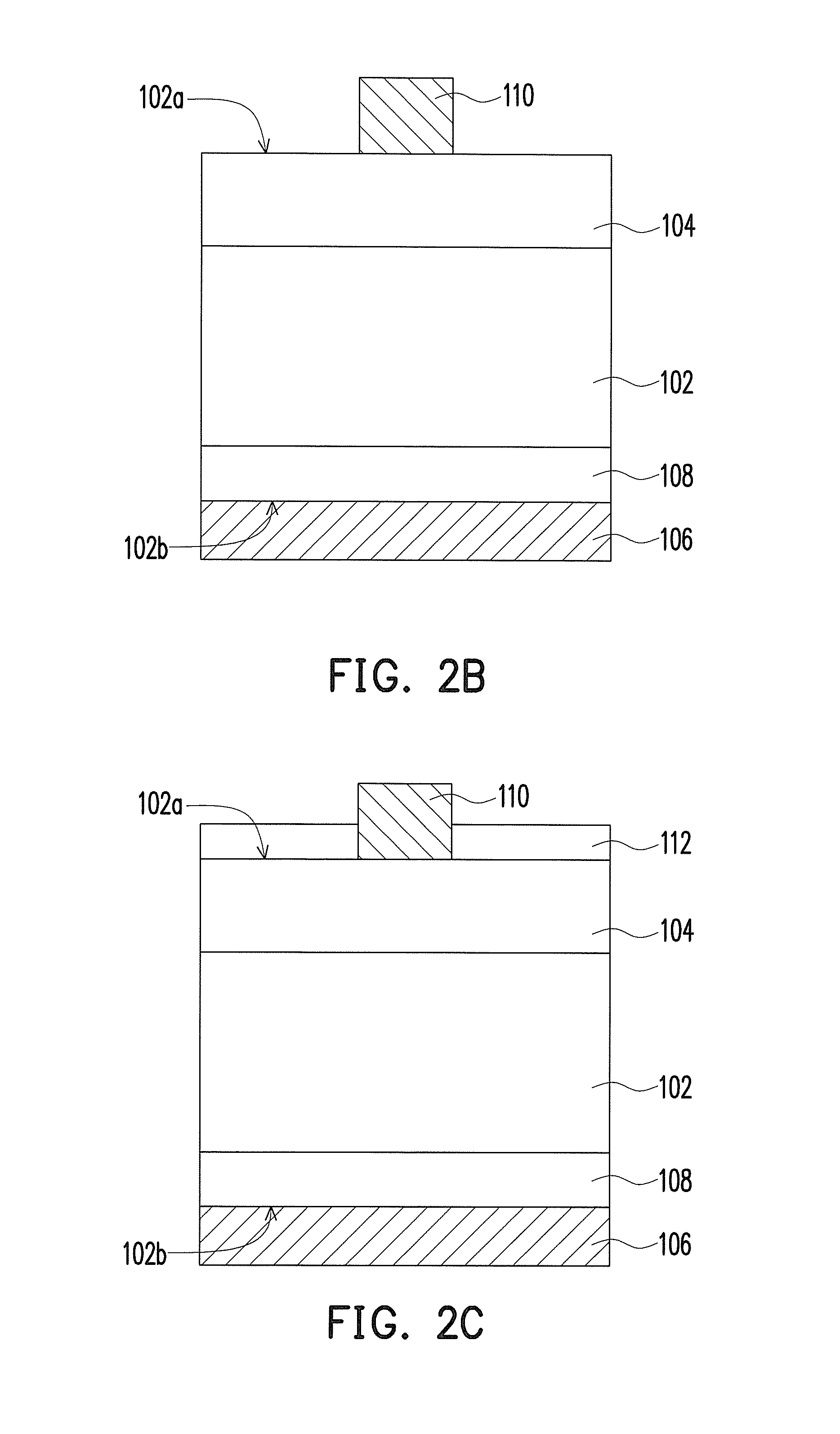Solar cell
a solar cell and solar cell technology, applied in the field of solar cells, can solve the problems of low photoelectric conversion efficiency of conventional solar cells, and generation of electricity, and achieve the effect of low reflectance and higher photoelectric conversion efficiency
- Summary
- Abstract
- Description
- Claims
- Application Information
AI Technical Summary
Benefits of technology
Problems solved by technology
Method used
Image
Examples
experimental example 1
[0048]A phosphorus diffusion process is performed in step 1. Using a p-type silicon wafer as a substrate, the native oxide layer on the silicon wafer is first removed using BOE (buffer oxide etchants, an aqueous solution containing 30% NH4F and 6% HF) solution. Then, a phosphorus pentoxide (P2O5) solution having an 8% weight concentration is spin coated on the p-type silicon wafer. The spin coating includes two stages. The spinning condition at the first stage is 1,500 rpm for 15 seconds, and the spinning condition at the first stage is 2,500 rpm for 35 seconds, wherein the rate and time of the spin coating determine the thickness and uniformity of the phosphorus pentoxide thin film.
[0049]Then, after the spin coating, the silicon wafer is put on a hot plate and heated at 150° C. for 10 minutes, followed by heating at an increased temperature of 200° C. for another 10 minutes. The stability of the thin film containing phosphorus pentoxide is improved by the thermal treatment.
[0050]Th...
experimental example 2
[0061]The seed layer of the solar cell of experimental example 2 is composed of a magnesium oxide buffer layer and a zinc oxide layer, wherein the magnesium oxide buffer layer is first formed on the surface of the substrate, and then the zinc oxide layer is formed on the magnesium oxide buffer layer. Then, a plurality of nanorods are formed on the seed layer to complete a solar cell of experimental example 2.
[0062]FIG. 5 is an X-ray diffraction spectrum of the solar cell of experimental example 1 and experimental example 2, respectively. Curve A of FIG. 5 represents experimental example 1, curve B represents experimental example 2, wherein the peak at about 35° of 20 is the signal from zinc oxide (0002) orientation. Table 2 shows the full width at half maximum (FWHM) of the zinc oxide (0002) peak of the solar cell of experimental example 1 and experimental example 2, respectively.
TABLE 2Full width at halfmaximum (°)Experimental0.41Example 1Experimental0.33Example 2
[0063]Referring to...
PUM
 Login to View More
Login to View More Abstract
Description
Claims
Application Information
 Login to View More
Login to View More - R&D
- Intellectual Property
- Life Sciences
- Materials
- Tech Scout
- Unparalleled Data Quality
- Higher Quality Content
- 60% Fewer Hallucinations
Browse by: Latest US Patents, China's latest patents, Technical Efficacy Thesaurus, Application Domain, Technology Topic, Popular Technical Reports.
© 2025 PatSnap. All rights reserved.Legal|Privacy policy|Modern Slavery Act Transparency Statement|Sitemap|About US| Contact US: help@patsnap.com



